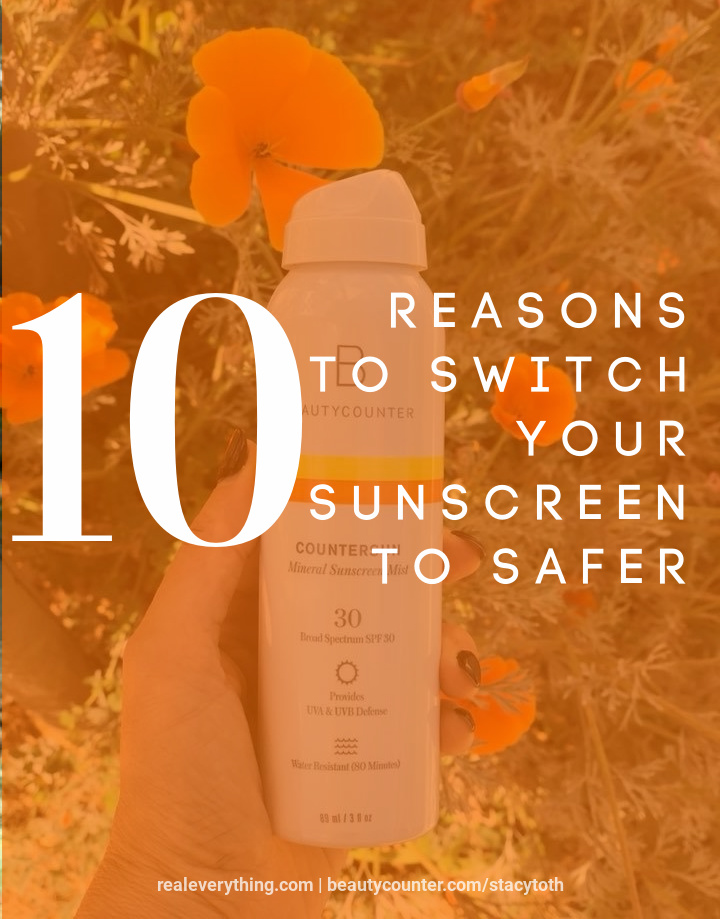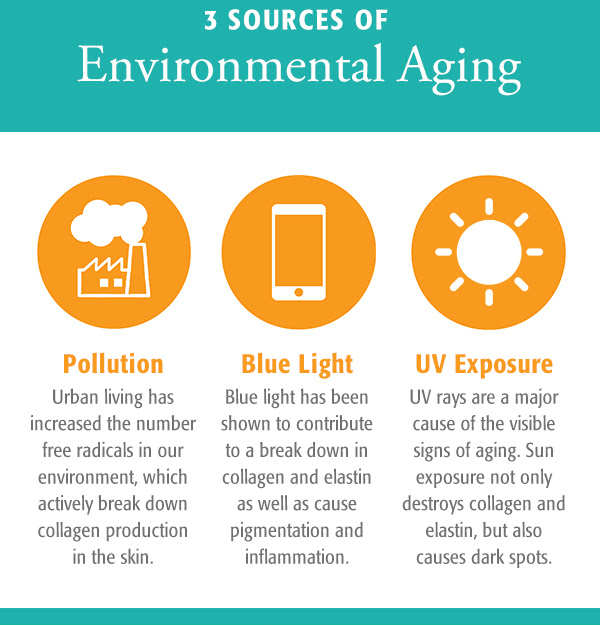Wow, the news never stops on the dangers of sunscreens. While you may be wondering how to choose a benzene-free safer sunscreen, this isn’t the first warning we’ve gotten about the potential risks of some sunscreens.
First, in 2019 the FDA told us the chemicals in sunscreen were being absorbed into our bloodstream. At that time, they couldn’t mandate requirements, and only recommended mineral-based formulas (zinc and titanium-oxide specifically). They asked manufacturers to test their products for safety [read here]. Then, in 2020 Hawaii passed laws to protect its reef (and you) from chemical sunscreens [read here]. And now, in 2021 a 3rd party tested the ingredients found in hundreds of popular sunscreens and found a significant portion contained a known carcinogen, benzene [see report].
Yes, the sun protection you may apply to prevent cancer has been linked to actually causing cancer.
The alarm bells are ringing, but all is not lost. We can learn about choosing a health-protective sunscreen and how to read labels to choose brands that test for our safety before we use it. Before we can dive in, though, it’s important to also temper the fear-mongering a bit.
First of all, sun exposure isn’t all bad
Did you know sun is good for you? Exposure itself doesn’t increase risk of cancer, and has many benefits: balancing hormones with circadian rhythm & increasing Vitamin D to name a few. In fact, sun exposure has been linked to reducing other adverse health events because of how vital a role it plays in our wellness.
Getting burned IS bad, however, and increases risk of cancer. Photoaging (skin damage from the sun) is also the most significant cause of signs of aging.
You can reduce risk by avoiding excessive sun exposure that causes burns, wearing UV protective clothing, hats, sunglasses, leveraging shade or scheduling activities when sun is not at peak times (when the rays are at their strongest) and wearing sunscreen.
How Is the Sun Harming Me?
1️⃣ UVB: are the burning rays linked to skin cancer.
2️⃣ UVA: aging rays penetrate deeper into the skin causing free radical damage which can lead to wrinkles and age spots on skin.
3️⃣ Blue Light makes the sky blue and in electronics. Induces oxidative stress, accelerates aging effects (skin elasticity, wrinkles, hyper-pigmentation). Not to mention it damages our eyes!
It’s not all bad news – according to skincancer.org:
🔆 Daily use of just SPF 15 can reduce risk of squamous cell carcinoma by ~40 percent, and melanoma risk by 50 percent.
😎 Sunblock helps prevent skin aging caused by the sun: wrinkles, sagging, and age spots (don’t forget eye protection, too!).
⛅ When cloudy, up to 80 percent of sun’s UV radiation still reaches us.
How much protection?
☀️ SPF: Sun Protection Factor defines how long the sun’s UVB rays take to redden skin if you apply as directed compared without protection. ex: SPF 30 takes 30x longer to burn
But, you want to make sure you choose:
🌈 Broad spectrum: Protects your skin from both UVA and UVB rays.
🦮 SPF 15: Blocks ~93% of sun’s rays, ideal for every day, occasional exposure, like walking your dog, or driving to work. <
🌞 SPF 30 or higher: Filters out 97 percent, necessary for extended outdoor activities.
🤯 SPF 50 only filters 1% more: 98%. I always thought I needed as high number as possible – what # do you use?
Application is more important than SPF number so cover every area exposed to the sun. Reapply every 2 hours, or after exiting the water. Apply 15 minutes before getting into the water and not while sweating.
Not all sunscreens are created equal.
Chemical sunscreens are killing the coral reef – imagine what they’re doing to you! We know they are absorbed into our skin (that’s how they work, after all) but studies showing them in our bloodstreams after use is what prompted FDA’s warnings.
Chemical sunscreens absorb UV radiation into your skin and the chemical bonds break down rays and release them as heat. Avoid ingredients like oxybenzone, avobenzone, octisalate, octocrylene, homosalate and octinoxate. Mineral sunscreens create a barrier on the skin to reflect and block rays from penetrating into your skin. Many sunscreens will advertise themselves as mineral sunscreens, but add chemical filters to make the product less expensive to manufacture.
FDA’s lack of ability to regulate personal care products also extends to validating label claims. For example a brand can say phalate-free, but if there is ‘fragrance’ in the ingredient list it almost surely has phalates included in the hidden “fragrance loophole.” Same goes for your sunscreens, a brand can say “mineral” or “zinc-based” on the front in big bold letters, but if you turn it over you may see one of the chemical filters listed as an ingredient.
If your sunscreen is clear, it has a chemical filter – zinc and titanium-oxide are white by nature. We must always read labels!
UVB rays are the burning rays linked to skin cancer while UVA rays penetrate deeper into the skin, causing free radical damage, and can lead to wrinkles and age spots.
Research suggests blue light from the atmosphere and smart devices can damage skin proteins and cause as much skin-aging effects as UVA & UVB. UVA and blue light penetrate glass and clouds so always wear sunscreen!
Zinc oxide and titanium dioxide naturally block all the sun’s potentially harmful rays, including blue light!
Things I look for when shopping:
1️⃣ B Corp & EWG verification or other certifications that show transparency for putting people and planet first,
2️⃣ Responsible sourcing such as ingredient safety that is also fair trade, and
3️⃣ Safety testing since there is no oversight on personal care screening, and brands or source materials can make any claims without substantiating it, I look for actual results to ensure products are truly clean, and not just green-washed.
Afterall, poison ivy and snake venom are “natural” but do I want to put it on my skin, right?! I haven’t found any other brand testing every single batch for hormone disruptors and heavy metals. Let alone, also focusing on sustainability and ingredient integrity the way Beautycounter does.
Why I Choose Countersun
I haven’t found any brand testing every batch & focusing on sustainability and ingredients the way Beautycounter does. When it comes to Beautycounter’s sunscreen it is:
- Reef-friendly (fun fact: we helped pass Hawaii law)
- Broad spectrum
- Water resistant
- award-winning non-greasy lightweight absorbs easily
- skin superfoods nourish and hydrate
- mist is convenient, even application of an aerosol but is air-powered
- tinted options for coverage boost
- no eye or skin irritation
- tested for safety, no heavy metals, hormone disruption, carcinogens
- non-nano (inhaled nanoparticles can damage lungs)
Tips to apply:
- Stick ideal for kids and head, waxy formula resists sweat best
- Lotion and mist best for body, shake well and rub in
- Reapply! It must be on the skin to physically block the sun, if wet, touch-up hourly (each pool break). Dew Skin alone one time is all I need if not sweating.
- Don’t be shy, use enough to cover exposed skin
If not using Beautycounter, ensure your mineral brand does not list chemical filter ingredients (oxybenzone, avobenzone, octisalate, octocrylene, homosalate, or octinoxate) and check if non-nano and tests for heavy metals.
If you want to try it, the options are:
- Countersun Mist large, tinted, or small, SPF 30(only non-nano non-aerosol non-propellant mineral spray)
- Large or small Countersun Lotion SPF 30**
- For kids or the face, Countersun Stick, SPF 30
- Countersun Sheer Defense Facial Moisturizer, SPF 25
- Dew Skin Sheer Tinted Moisturizer, SPF 20**
🏖️ jump start your color with Countersun Tinted Mist or Glow Shimmer Oil
Reverse and prevent signs of sun damage with
🌗 Bright Side Duo**
🌑 Overnight Resurfacing Peel**
🕰️ Countertime**
**award winning favorites
Added bonus: Skin Superfoods
Countersun includes Lutein, a type of vitamin called a carotenoid. It is related to beta-carotene and vitamin A. Science has shown that Lutein has skin health benefits, evening skin tone and brightening the appearance of skin by reducing signs of sun damage. Yes, your sunscreen is not just preventing sun damage – but fighting existing photoaging when you wear it! [source]
Another especially important Vitamin is C, because it synthesizes collagen. This is why it is an excellent skincare superfood as well, as collagen is our body’s building blocks for skin, hair and nails.
C is long known for anti-aging and brightening benefits, but “studies show using sunscreen with Vitamin C protects the skin from further photo damage caused by uv rays. Sunscreen protects the skin from the sun’s uv rays, but adding C into your skin care regimen can protect you even further.” Like Dew Skin, which includes both!
Lines and wrinkles can form due to oxidative stress, mostly from pollutants and environmental aggressors, such as the uv rays. The best intense treatment I’ve seen is the Bright Side Duo. The Peel has botanical acids that soothe and slough away old damaged skin cells, while the C Serum uses two forms of stable Vitamin C as well as soothing turmeric for immediate and long-term results. This day and night duo plays offense and defense!
WANT MORE INFO?
Checkout these two podcasts (free in iTunes or listen through your web browser)
The Whole View Podcast, ep 301: Sunscreen, Sun Exposure & Sunburns
The Whole View Podcast ep 302: Is Blue Light Harmful and What Should I Do?
Want more info on our Real Life? Healthy recipes, parenting tips, and general lifestyle stuff goes out in our Real Everything newsletter, join here.
Never want to miss a post, sale, or deal? Join my Healthy Inside & Out e-mail list for more info on non-toxic living and safer skincare!

















